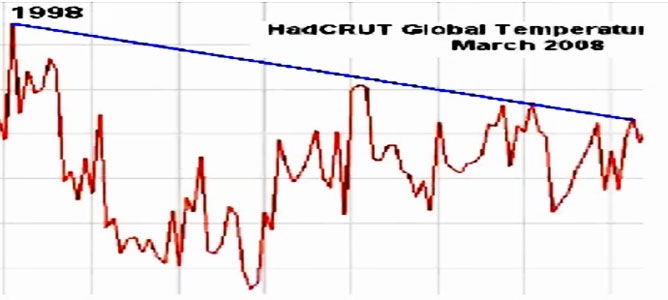The video below is an entertaining look at where global warming myths come from, by science journalist Peter Hadfield. At the risk of spoiling the video, the short answer is “idiots who don’t understand numbers”.
Here’s an example from the video, where somebody claims in a blog post that global temperatures have been dropping, using this straight-line “analysis”:

As the video makes clear, to work out what’s really happening to the average global temperature, you have to do sophisticated statistical analysis to adjust for the cyclical trends and/or doing a rolling average.
But looking at the longer-term data set, it should have been pretty obvious that 1998 isn’t a great year to start the comparison from (unless you’re a willful global warming denier?)

The ramblings of these self-declared experts are then picked up and promoted throughout “the internets”, and end up being widely believed (a good example of confirmation bias). Thankfully, journalists like Peter and web sites like Ben Goldacre’s excellent Bad Science blog do a great job of trying to minimize the damage caused by this disinformation.
Sadly, though the same thing happens in organizations, too – bad data is too often badly analyzed and simplified, then passed on as “truth” to the rest of the organization. Just like on the internet, some people are happy to jump on data that confirm their existing biases, and may not be keen to figure out whether it’s actually true or not (a former boss, Dave Kellogg, once told me the first question to ask any executive who requests a research study is “do you want a high number or a low number?”).
This problem will never go away, since it’s firmly anchored in the weaknesses of human psychology. The best long-term remedy is to have pervasive business intelligence (so there’s less reliance on anecdotal evidence), to employ information analysts (the equivalent of Peter and Ben) in a BI competency Center, and to expose bad analysis to more people using collaborative decision-making environments like SAP StreamWork.

Comments
One response to “Where Idiots Get Their Data: Other Idiots (Don’t Let it Happen in Your Company)”
[…] to better grasp the information assists in building ever more value from the data. However, misguided analysis can be equally fraught with complication. With time and attention the power of data can be […]